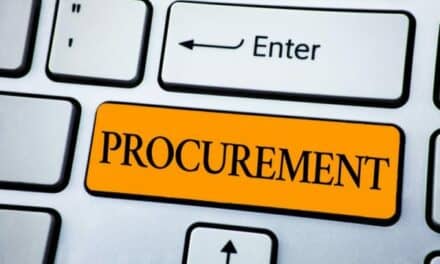How one health system manages its equipment—and where it and other facilities may have room for improvement
By Chris Hayhurst
Lake Regional Health System in Osage Beach, Mo, is not what most would describe as a “big” health care organization. Still, with its 116-bed hospital and numerous outlying clinics, it does provide service to a substantial portion of the state. “Even though we’re relatively small, we do cover three counties,” notes Ken Ervin, who until last July was the system’s director of clinical engineering. “And we draw people here from all over the place.”
But it’s not Lake Regional’s geographical range that typically keeps Ervin’s ex-colleagues on their toes. Rather, says Ron Baker, his successor as director, it’s the fact that their main building spans a half-million square feet—and that across that area, and in their satellite facilities as well, he and his team of just six BMETs are responsible for managing more than 5,000 “active” pieces of equipment. “There are a lot of locations for things to hide,” he says. “On the floors, in closets, in cabinets—you name it. We’re looking for equipment every single day.”
Big Challenges
Ervin, who currently works at Children’s Mercy Hospital in Kansas City, Mo, as director of biomedical engineering, considers locating assets that move from department to department—and, in come cases, between different facilities—to be “one of the biggest challenges” biomeds face. “Infusion pumps, sequential compression devices, feeding pumps—anything that cycles through materials management and their clean room can be really difficult to find.”
When it’s biomed’s job to locate 260 infusion pumps so they can do preventive maintenance, as was the case at Lake Regional recently, the “hunting and searching” that is often required wastes precious time that most departments can’t spare, Ervin says. “People are hoarding these devices because they want easy access to them, but then they forget where they put them, so they just go missing. It’s these group assets—these things that clinicians need all the time—that really become tough to manage efficiently.”
At Lake Regional, Ervin says, asset management has become much easier since they started using a computerized maintenance management system (CMMS) made by Accruent (formerly Four Rivers). The Web-based program, called TMS (See Ervin’s 24×7 article on picking the right CMMS for your facility here.), allows the clinical engineering staff to easily schedule PMs for all hospital equipment. It also simplifies the tracking of work-order requests, which are submitted electronically from other areas within the organization that also have access to the system. “We’d been using another program that didn’t have that intranet connection,” Ervin says. “This one puts everyone”—including clinical engineering, engineering, and HVAC—“on the same platform. And it really drives almost everything we do.”
The one major exception, at least for the moment, is asset tracking. Lake Regional’s CMMS program comes integrated with a radiofrequency identification (RFID)/real-time location system (RTLS) platform, but the facility lacks the infrastructure necessary for it to work. “Our main problem is our wireless antennae coverage,” Ervin explains. “We just don’t have enough.”
Making Assets Visible
The issues hospitals face related to locating assets is something Joel Cook knows a lot about. As senior director of health care solutions at Stanley Healthcare in San Francisco, Cook oversees development and distribution of the company’s MobileView RTLS platform. The Web-based system, which integrates with CCMS programs like Accruent’s, connects to a hospital’s existing Wi-Fi network to provide a live picture of equipment location, condition, and status. “The key for biomed is it gives you visibility,” Cook says. “You always know exactly where your equipment is and whether it’s in use.”
The system works by reading Wi-Fi tags affixed to mobile equipment like infusion pumps, defibrillators, and beds, Cook explains. The battery-operated tags use the Wi-Fi network to report their locations to the MobileView software at customizable intervals. “If you’re a biomed and you need to find all of the available infusion pumps on one floor of your facility, you just go into the system” on your computer or smartphone and enter the appropriate criteria, he says. “Or if you get a repair notice on a piece of equipment, you just plug in its serial number to see where it is.” The system also includes what Cook describes as a “very robust” reporting module that allows BMETs to see things like par-level history and PM due dates.
While the use of RTLS platforms in health care facilities is becoming more and more common, there are still quite a few hospitals that have had no exposure to the technology, Cook says. Such facilities often face problems beyond the expected difficulties associated with the inability to find things. First, he explains, they typically have “way more inventory than they need”—in large part because facilities may overstock to ensure that equipment is always available. On the other hand, he adds, “they also usually have very high shrinkage rates—they may be losing 10% to 15% of their equipment each year.”
Organizations that implement RTLS solutions are increasingly putting tag-triggered electronic exciters at their exits in order to reduce those losses, Cook says. “No matter what you do, you’ll never catch everything. But you can catch a lot of the small things that are going out with the trash and the laundry.”
Cook calls par-level monitoring and shrinkage exciters the “low-hanging fruit” of asset-management improvement—simple solutions that he believes most facilities could employ right away. Beyond that, he says, are the “much more sophisticated asset-utilization analyses” that his company is now working on with some of its customers.
When a hospital uses RTLS-embedded analytics as a means to survey their inventory, they can get a “retrospective view” of how they’re using that equipment, he explains. “So you can look at your screen and see how many pumps, or how many ventilators, or how many crash carts you have in a certain area, and see very clearly how many of each you’ve historically needed over time.” When you have information like that at your fingertips, Cook notes, you can distribute your assets more effectively and make sure you have them when and where they’re needed most. “It lets you manage and optimize your fleet much more efficiently.”
Sharon James, a Milwaukee, Wis-based marketing manager for GE Healthcare’s asset performance management portfolio, agrees. GE’s cloud-based asset management and maintenance tool, the iCenter, also provides its users with abundant data reflecting asset location and status, maintenance and utilization history, and expenses. “It’s primary purpose is to provide hospital managers with the insights they need to improve performance,” James says.
Like Cook, James often sees biomed departments that are accustomed to managing their assets manually. “Maybe they’re using a Microsoft Excel database of some kind,” she says. “Whatever they’re doing, it usually requires a lot of effort.” The iCenter software, James notes, streamlines the process with custom dashboards that display everything a manager might need to know. “So instead of spending hours each day looking for equipment or figuring out your PMs, you can do it all in the morning in just five or 10 minutes,” she says, determining whether any equipment is down, any service requests are pending, and more.
Contrast that, James says, to what a biomed manager might have to go through without that tool or another one like it. “Collecting all the data from your staff, putting it all together and crunching the numbers, trying to draw some kind of insight out of it before you go ahead and make a decision…It’s not an easy job.”
Nor is it a cost-effective one, adds Cook. “At the end of the day, hospitals need to cut costs, and that means that their clinical engineers need to be able to do more with less.” He points to one hospital Stanley Healthcare worked with recently in Florida as a “great example” of an organization that appears to be doing everything right.
“They were opening a new facility, and instead of buying new infusion pumps, they scraped what they needed” from their existing facility “because they had good utilization data from their RTLS program.” That data, he explains, showed that they had more than enough infusion pumps to go around. It also showed that if they were to put par-level exciters in their new clean and soiled utility rooms, they’d have much better luck tracking where everything was.
“So now they’re using our par-level dashboard to dispatch one guy who goes top to bottom in that building all day long with the appropriate equipment to clean those infusion pumps in the soiled utility room,” Cook says. “And then when he’s done, he puts them back in the clean utility room on that floor.” That’s not the way it usually works, however. “Most of our customers clean them right there in the patient’s room, or on the floor, and then put them back in clean utility directly,” he says—an approach Cook calls “kind of scary” from an infection prevention and cleanliness perspective.
He says other hospitals, meanwhile, choose to cycle their equipment “down to sterile processing, then to a materials-management holding area, and then back up to the floor”—a method he deems inefficient.” Fortunately, Cook says their Florida customer has arrived at a solution that is both safer and more efficient. “There’s no more running around like a maniac looking for dirty equipment,” he says. “They know exactly where the dirty pumps are so they can send their guy out to get them back in circulation.”
Opportunities for Improvements
In the future, Ken Ervin says he hopes Lake Regional and other health care systems will better utilize the asset management tools they may already have in place. “Things like attaching a digital photo, or work-order information, or user manuals and illustrated parts breakdowns to the index number for each piece of equipment listed in the electronic record—we have those capabilities now,” he says. But because they require issuing smartphones or tablets to the technicians who might benefit, most hospitals aren’t putting those tools to use yet, Ervin admits.
Another opportunity for asset-management improvement involves better communication between technicians and clinicians. “In the rest of the world,” Ervin says, “with almost any transaction that takes place, you get some kind of message or receipt when you’re finished that confirms things happened the way that you expected.” That’s often lacking in biomed, he notes. “The clinician who enters a work order on the floor doesn’t always know when that work is done.”
At Lake Regional, Ervin adds, poor communication around work-order status is no longer an issue, thanks to their CMMS. “Now, when a request goes out to one of our technicians, there’s an e-mail that goes with it,” he says. “And then once that work order is completed, the person who submitted it automatically gets an e-mailed notification.” He describes the system as a “feedback loop” that saves time, reduces frustration, and ultimately leads to real cost savings. “Plus, it eliminates the constant phone-ringing, because they don’t need to call us to see if we’re done,” Ervin points out.
That’s not to say that their new approach to asset management has been smooth sailing from the start. According to Ron Baker, there was a “big learning curve” that some had to navigate before they felt comfortable using the CMMS program. And even now that most are up to speed on how it works, they do still occasionally run into problems, such as the wireless-antennae issue they’re currently sorting out. “But so far,I it’s been a major improvement. And whenever we need it, we have good technical support,” he says. “I think everyone is getting used to it now.”
And the best part? Nobody has asked to revert to the original system.
Chris Hayhurst is a contributing writer for 24×7.





